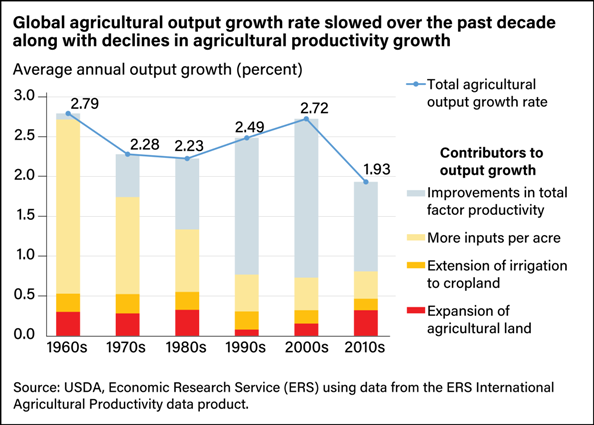First, the decline of earth’s biodiversity (care of Living Planet):
Well that’s depressing. What can be done to reverse this decline? Lots of things, but most of all: shrink agriculture, by which I mean the land area used for crops, pastures, orchards, vineyards, and flowering shrubs (Food and Agriculture Organization). Because…
“The expansion of agriculture has been one of humanity’s largest impacts on the environment. It has transformed habitats and is one of the greatest pressures for biodiversity: of the 28,000 species evaluated to be threatened with extinction on the IUCN Red List, agriculture is listed as a threat for 24,000 of them.” - Hannah Ritchie and Max Roser, (2019) Our World in Data
At the present time, almost 33% of the earth’s total land area is used for agriculture. Let’s reduce that by a fifth, from roughly 49 million to 38 million square kilometers: close to the amount of agricultural land in 1950. Sounds crazy, but it’s doable, considering that agricultural productivity has already improved to the point that to produce the same amount of crops as in 1961, we need only 30% of the farmland (Our World in Data).
Global agricultural productivity continues to improve, although at a slower rate:
Note: “total factor productivity” (TFP) “measures the overall efficiency with which farmers transform agricultural market inputs (land, labor, capital, and material inputs such as fertilizer and feed) into crop and animal commodities.” (Economic Research Service/USDA)
But the slowdown in productivity growth is not happening in developed countries:
It’s happening in developing countries:
So the main challenge is to find ways to increase the pace of agricultural productivity growth throughout the world, but especially in developing countries.
Next: How to improve agricultural productivity, sustainably
References:
Hannah Ritchie and Max Roser (2019) - "Land Use". Published online at OurWorldInData.org. Retrieved from: https://ourworldindata.org/land-use
Resources, Policies, and Agricultural Productivity in Sub-Saharan Africa, by Keith O. Fuglie and Nicholas E. Rada. Report Summary from Economic Research Service/USDA, February 2013 https://www.ers.usda.gov/webdocs/publications/45045/35519_err145_summary.pdf?v=3554.5



